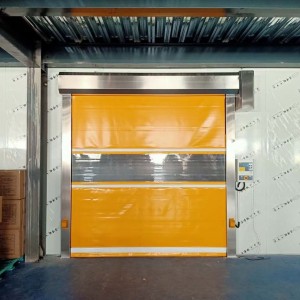One area that is often overlooked when it comes to insulating a home is the garage door. Many homeowners focus on insulating their walls and roof, but forget that the garage is an important part of their house. If your garage shares a wall with your living space or is used as a work space, an insulated garage door offers several benefits. In this blog post, we discuss the importance of rolling garage door insulation and how it can enhance temperature control.
Why insulate?
1. Energy Efficiency: Insulating your garage door can improve the energy efficiency of your entire home. If your garage is attached to your house, extreme temperatures can seep through the door and affect the overall climate within your living space. Proper insulation helps regulate temperature, reducing heat loss in cold winters and preventing heat gain in hot summers.
2. Climate Control: If you’re using your garage as a workspace, it becomes critical to insulate your roller shutter doors. Insulating your garage door will ensure your garage door maintains a comfortable temperature year-round, making it easier to focus on your projects no matter what the weather is like outside. Without proper insulation, extreme temperatures can make it uncomfortable or even impossible to use the garage for various activities.
3. Noise Reduction: If your garage is next to a busy street or noisy neighbors, insulation can help reduce the noise coming through the rolling doors. By adding a layer of insulation, you can create a barrier that absorbs and dampens sound, providing a quieter environment for your garage and adjacent living spaces.
Insulation method of garage shutter door
1. Insulated Garage Door Panels: The most effective way to insulate your garage roll-up door is to replace it with an insulation panel. Designed for thermal efficiency, these panels significantly improve the thermal insulation of the door. Insulation panels consist of multiple layers of materials, such as foam and aluminum or steel, that provide excellent temperature control.
2. Weatherstripping: Adding weatherstripping to an existing garage roll-up door can also enhance insulation. Weatherstripping is an affordable and easy way to put a seal around the edge of a door to prevent air leaks. It helps minimize drafts and maintains a constant temperature inside the garage.
3. Reflective insulation: Another option is to install reflective insulation on your garage door. Reflective insulation is made of layers of aluminum foil or plastic air bubbles that create a barrier to heat transfer. It works by reflecting the sun’s rays in hot weather and preventing heat loss in cold weather.
Insulating your garage door is an excellent investment with several benefits including energy efficiency, climate control and noise reduction. By taking steps to insulate your garage door, you can create a more comfortable and functional space while also improving the overall energy efficiency of your home. Whether you choose insulation boards, weatherstripping, or reflective insulation, choosing to insulate your garage door is a step toward a more comfortable, greener living environment.
Post time: Jul-14-2023

